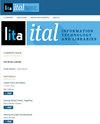Reorienting Collection Analysis
IF 1.3
4区 管理学
Q3 COMPUTER SCIENCE, INFORMATION SYSTEMS
引用次数: 0
Abstract
In public libraries, especially those in rural settings, it is important that every dime of library funding is leveraged effectively into serving the community. As part of a year-long project beginning in January 2023, we are evaluating item-level cost-effectiveness for each circulating item housed at the public library in Lakeville, Indiana. Through the use of big(ish) data, some custom Python scripting, and machine learning algorithms we hope to answer: How much money is saved by library patrons through their use of the public library's physical collection? How much money is saved by the community through the operation of a public library based on the use of the circulating collection? And are there any non-obvious traits which make an item or title a more or less cost-effective circulating asset? In this column, I will describe the scripts, share initial findings, discuss challenges, and investigate next steps.调整收集分析的方向
在公共图书馆,尤其是农村地区的公共图书馆,有效利用图书馆的每一分钱为社区服务非常重要。作为 2023 年 1 月开始的为期一年的项目的一部分,我们正在对印第安纳州莱克维尔公共图书馆的每个流通项目进行项目级成本效益评估。通过使用大(等)数据、一些定制的 Python 脚本和机器学习算法,我们希望回答以下问题图书馆读者通过使用公共图书馆的实体馆藏节省了多少钱?根据流通藏书的使用情况,社区通过公共图书馆的运营节省了多少钱?是否有任何非显而易见的特征使某个项目或书目成为更具成本效益或更不具成本效益的流通资产?在本专栏中,我将介绍脚本、分享初步发现、讨论挑战并研究下一步措施。
本文章由计算机程序翻译,如有差异,请以英文原文为准。
求助全文
约1分钟内获得全文
求助全文
来源期刊

Information Technology and Libraries
管理科学-计算机:信息系统
CiteScore
2.90
自引率
5.60%
发文量
25
审稿时长
1 months
期刊介绍:
Information Technology and Libraries publishes original material related to all aspects of information technology in all types of libraries. Topic areas include, but are not limited to, library automation, digital libraries, metadata, identity management, distributed systems and networks, computer security, intellectual property rights, technical standards, geographic information systems, desktop applications, information discovery tools, web-scale library services, cloud computing, digital preservation, data curation, virtualization, search-engine optimization, emerging technologies, social networking, open data, the semantic web, mobile services and applications, usability, universal access to technology, library consortia, vendor relations, and digital humanities.
 求助内容:
求助内容: 应助结果提醒方式:
应助结果提醒方式:


